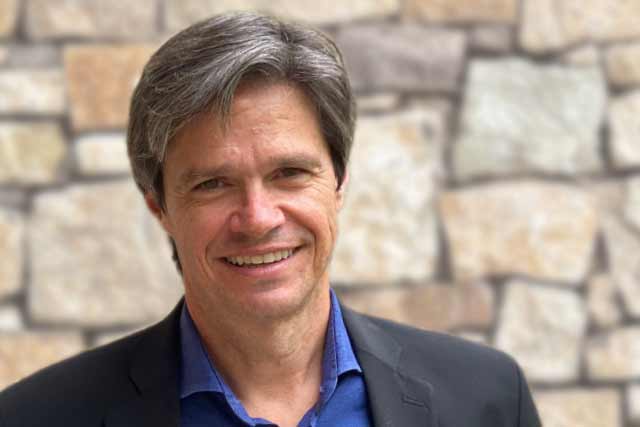
In the span of one year, Ventus Therapeutics has developed a new technology that figures out how to get small molecules to bind to proteins previously deemed “undruggable.” The startup has also grown its pipeline from three programs to five, two of which are on track for clinical testing.

Understanding EGPA: The Role of Eosinophils and Advancements in Treatment Options
FASENRA® (benralizumab) injection, for subcutaneous use, 30 mg is indicated for the treatment of adult patients with eosinophilic granulomatosis with polyangiitis (EGPA). FASENRA provides a treatment option for HCPs to consider when managing this challenging disease.
Ventus, which has operations in Waltham, Massachusetts and Montreal, now has $100 million in additional financing. But here’s the thing: It doesn’t need the money. The startup still has more than half of the $60 million in Series A cash it raised when it emerged from stealth last year, said CEO Marcelo Bigal. What the new cash will enable it to do is to work on all five drug programs instead of picking and choosing which ones to prioritize.
“The money gives me the runway that I need to do this,” Bigal said. “It also gives me the balance sheet if I want to do something different, like an IPO.”
The Series B round of funding announced Thursday was led by RA Capital Management.
Ventus launched last year with technology that enables scientists to understand the structure of innate immune system proteins. With that knowledge, the company discovers small molecules that can target these proteins. Ventus still has this structural immunology platform, but it has since developed additional technology that enables it to see the pockets on a protein that are druggable by small molecules. Unlike the company’s first technology, it’s not limited to innate immune system proteins.
The new Ventus technology, called ReSOLVE, accounts for how proteins move and change shape. As proteins move, druggable pockets will be visible only in some conformations, Bigal said. ReSOLVE enables scientists to see where and when a protein’s druggable pockets are accessible. Ventus isn’t the only startup that has developed technology that accounts for protein motion. But Bigal added that there’s more to the technology, and it’s reflected in its name. “SOLVE” isn’t a suggestion that the technology solves a problem, rather, it’s meant to convey “solution,” as in water. Cells are filled with fluid, and that fluid affects how proteins move.
“We account for how the water dynamics change the druggable pockets,” Bigal said.
Ventus is using its technology to develop drugs for autoimmune diseases, inflammatory disorders, and cancer. The company isn’t yet revealing specific disease targets. But the company has disclosed that its second most advanced small molecule, stemming from its initial innate immune system research, targets NLRP3. That protein is an inflammasome—it mediates pro-inflammatory cytokine proteins IL-1b and IL-18.
NLRP3 is linked to many autoimmune diseases characterized by inflammation. It’s a target of interest for several companies and has been the basis of several deals in recent years. In 2018, Genentech paid an undisclosed amount to acquire pre-clinical stage Jecure Therapeutics and its pipeline of NLRP3 inhibitors. In 2019, Novartis paid $310 million up front to acquire IFM Tre, whose lead NLRP3 program at the time was in early clinical development for the liver disorder nonalcoholic steatohepatitis as well as other inflammatory diseases. Last June, NodThera raised $55 million in Series B cash to support its work developing NLRP3 inhibitors for chronic inflammation disorders. The company’s lead NLRP3 inhibitor is in early-stage clinical testing and the pipeline includes compounds that can cross the blood-brain barrier.
Using its protein structure technologies, Ventus says it was able to understand the dynamics of NLRP3’s binding pocket. From there, the company identified and optimized small molecules to bind to those pockets. These molecules include ones capable of penetrating into the brain, and Bigal said Ventus will pursue neurological disorders as well as systemic diseases. The two lead Ventus programs should yield drug candidates by the first quarter of next year, and then enter clinical testing by the end of 2022, Bigal said.
Bigal said that Ventus’s protein technologies are capable of developing dozens of drugs—much more than a young company can handle on its own. But Ventus won’t be adding compounds to its pipeline, at least in the near term. The company is exploring potential partnerships with larger pharmaceutical companies. Bigal said he’s not looking for partners that want to develop Ventus’s internal pipeline. Instead, he’d like to strike deals with companies that want to use the startup’s technology to develop drugs for other diseases.
With Ventus’s new financing, Josh Resnick, managing director at RA Capital, will join the Ventus board of directors. The Ventus financing marks the second time in as many days that RA Capital has splashed out cash for a company bound for the clinic. The investment firm also led the $100 million Series B round of funding that Seattle-based Icosavax announced on Wednesday.
The latest Ventus financing included the participation of BVF Partners, Casdin Capital, Cormorant Asset Management, Fonds de solidarité FTQ, and Alexandria Venture Investments. Versant Ventures, the venture capital firm that founded Ventus, also invested, as did GV, another earlier investor.
Photo by Ventus Therapeutics








